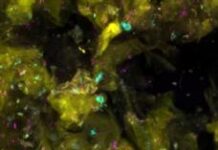A randomised phase III PRIME study prospectively demonstrated that as maintenance treatment, niraparib with individualised starting dose significantly prolonged progression-free survival (PFS) versus placebo in the intention-to-treat (ITT) population of patients with newly diagnosed advanced ovarian cancer who responded to treatment with first-line platinum-based chemotherapy, irrespective of postoperative residual disease or biomarker status. It also showed an improved tolerability profile, without new safety signals identified.
PRIME included a broader, more representative patient population compared with PRIMA through the inclusion of patients with stage III disease who achieved R0 resection at primary debulking surgery. Findings are reported by Dr. Lingying Wu of the National Cancer Center/National Clinical Research Center for Cancer/Cancer Hospital, Chinese Academy of Medical Sciences and Peking Union Medical College in Beijing, China, and colleagues on 13 July 2023 in the JAMA Oncology.
The authors wrote in the background that PARP inhibitors can substantially extend PFS in the first-line maintenance setting and transformed the maintenance treatment landscape. Olaparib improved PFS versus placebo among a subset of patients with BRCA-mutated tumours. Olaparib plus bevacizumab extended PFS versus bevacizumab alone, but only in patients with homologous recombination deficiency (HRD).
The phase III PRIMA study demonstrated that niraparib significantly prolonged PFS versus placebo in the first-line maintenance setting regardless of HRD status. However, PRIMA mainly enroled patients with a very high risk of disease progression and excluded patients with stage III disease who had undergone R0 resection at primary debulking surgery and used an individualised starting dose based on baseline body weight and platelet count, a strategy to improve the safety profile of niraparib, in around 35% of patients only.
The efficacy and safety of niraparib with individualised starting dose still need further prospective assessment. The objective of the PRIME study was to evaluate the efficacy and safety of niraparib with the prospective adoption of individualised starting dose as maintenance treatment in a broad patient population with newly diagnosed advanced ovarian cancer who responded to treatment with first-line platinum-based chemotherapy, regardless of postoperative residual disease or biomarker status.
PRIME, multicentre, randomised, double-blind, placebo-controlled, phase III study was conducted in China and enroled 384 patients with newly diagnosed advanced ovarian cancer who received primary or interval debulking surgery and responded to treatment with first-line platinum-based chemotherapy. By data cut-off of 30 September 2021, median follow-up for PFS was 27.5 months.
Patients were randomised 2:1 to receive niraparib or placebo with individualised starting dose (200 mg per day for those with a body weight of <77 kg and/or platelet count of <150 ×103/μL [to convert to ×109/μL, multiply by 1] at baseline; 300 mg per day otherwise) stratified by germline BRCA status, tumour HRD status, neoadjuvant chemotherapy, and response to first-line platinum-based chemotherapy. The primary endpoint was blinded, independent central review-assessed PFS in the ITT population.
A total of 384 patients were randomised, of whom 255 (66.4%) to niraparib. Median age in niraparib group was 53 years (range, 32-77). Among 129 patients (33.6%) in placebo group, median age was 54 years (range, 33-77). In total, 375 patients received treatment, 247 (65.9%) in niraparib group at a dose of 200 mg per day, and 128 (34.1%) in placebo group
Median PFS with niraparib versus placebo was 24.8 versus 8.3 months (hazard ratio [HR] 0.45, 95% confidence interval [CI] 0.34-0.60; p < 0.001) in the ITT population; not reached versus 10.8 months (HR 0.40, 95% CI 0.23-0.68) and 19.3 versus 8.3 months (HR 0.48, 95% CI 0.34-0.67) in patients with and without germline BRCA variants; not reached versus 11.0 months (HR 0.48, 95% CI 0.34-0.68) and 16.6 versus 5.5 months (HR 0.41, 95% CI 0.22-0.75) in HRD and homologous recombination proficient groups; and 24.8 versus 8.3 months (HR 0.44, 95% CI 0.32-0.61) and 16.5 versus 8.3 months (HR 0.27, 95% CI 0.10-0.72) in those with optimal and suboptimal debulking.
Grade 3 or higher treatment-emergent adverse events (TEAEs) were reported in 139 patients (54.5%) in niraparib and 23 patients (17.8%) in placebo group. In niraparib group, the most common grade 3 or higher TEAEs included anaemia (18.0%), neutrophil count decreased (17.3%), platelet count decreased (14.1%), and white blood cell count decreased (6.7%). Serious TEAEs occurred in 48 patients (18.8%) in niraparib and 11 patients (8.5%) in placebo group. The niraparib group had 1 case each of acute myeloid leukaemia (AML) and myelodysplastic syndrome, and the patient with AML died of this TEAE. Dose reductions due to TEAEs occurred in 103 patients (40.4%) in niraparib and 8 patients (6.2%) in placebo group. Similar proportions of patients in niraparib and placebo groups (6.7% versus 5.4%) discontinued treatment due to TEAEs.
The authors commented that at the time of study initiation, no commercial HRD assay was approved in China and the laboratory-developed, unvalidated BGI HRD assay was used in this study. The HRD assay and myChoice test (Myriad Genetics), which was used in PRIMA, considered BRCA variants and evaluated genomic instability based on loss of heterozygosity, telomeric allelic imbalance, and large-scale state transitions, but they are not interchangeable due to differences in HRD scoring algorithms and the means to determine the HRD-defining threshold. Therefore, it warrants caution to compare homologous recombination-related results across studies because they used different methods to determine homologous recombination status.
Nevertheless, in HRD group identified in PRIME study, niraparib conferred a similar extent of PFS benefits versus placebo as niraparib in PRIMA and rucaparib in ATHENA-MONO (FoundationOne CDx assay for HRD testing) in respective HRD populations. In homologous recombination proficient populations, who are typically deemed to be less responsive to treatment with PARP inhibitors, niraparib appeared to reduce the risk of disease progression or death versus placebo by a larger extent in PRIME than PRIMA (HR 0.41 vs 0.68), which could be partly attributed to the previously described increased adherence due to improved tolerability.
The authors concluded that PRIME randomised study found that niraparib maintenance treatment prolonged PFS in patients with newly diagnosed advanced ovarian cancer after a response to treatment with first-line platinum-based chemotherapy, regardless of postoperative residual disease or biomarker status. An individualised starting dose of niraparib based on body weight and platelet count at baseline was effective and safe in the first-line maintenance setting.
The study was funded by Zai Lab (Shanghai) Co, Ltd, and partially supported by grant of the Chinese National Major Scientific and Technological Special Project for Significant New Drugs Development in 2020.
Reference
Li N, Zhu J, Yin R, et al. Treatment With Niraparib Maintenance Therapy in Patients With Newly Diagnosed Advanced Ovarian Cancer A Phase 3 Randomized Clinical Trial. JAMA Oncology; Published online 13 July 2023. doi: 10.1001/jamaoncol.2023.2283






